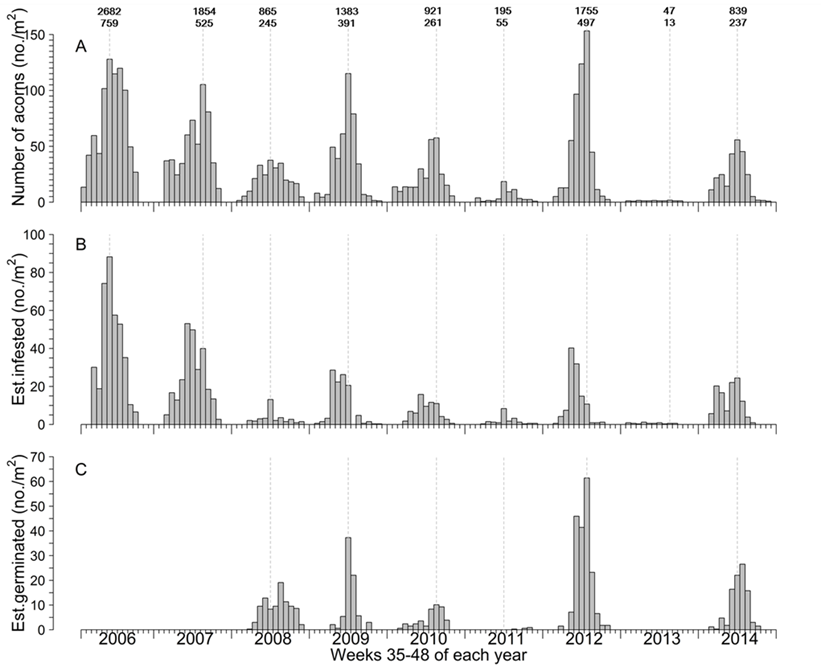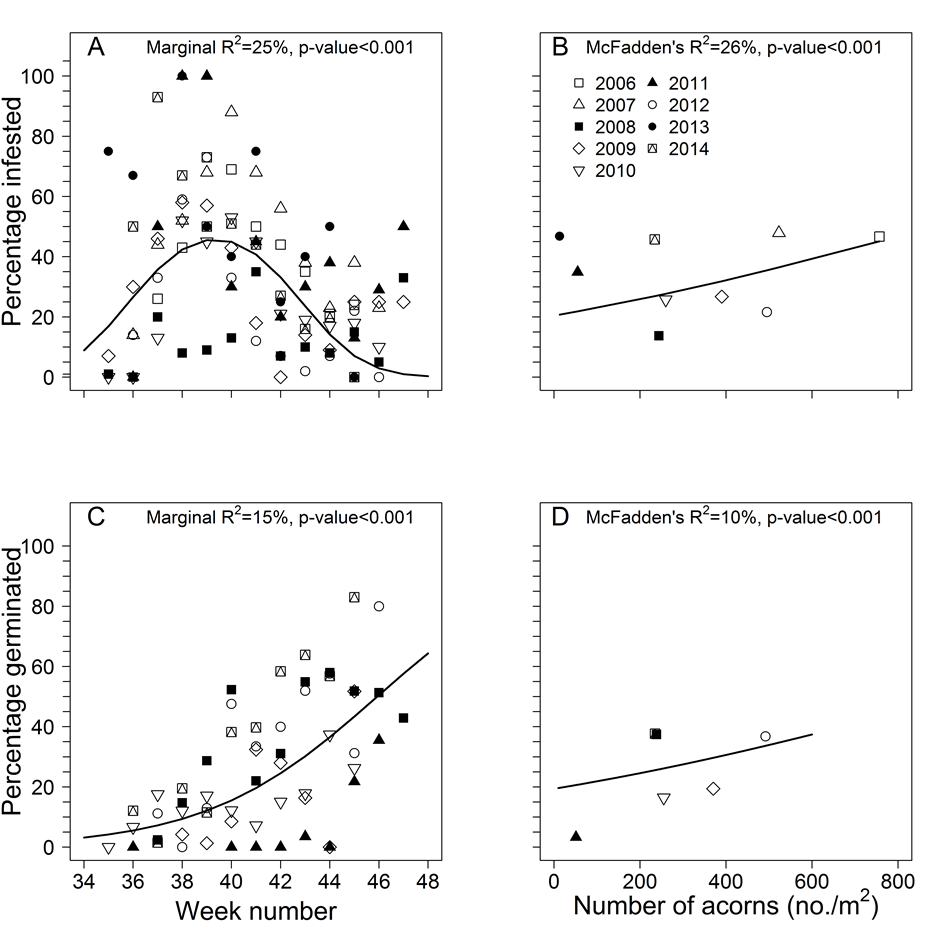Variation in fruit production can influence the interactions between plants and fruit predators and therefore affect population dynamics of both. To understand this system, researchers from Kunming Institute of Botany, Chinese Academy of Science (KIB/CAS) modeled how variation in acorn production by Quercus schottkyana, a dominant oak in Asian evergreen broad-leaved forests, led to a cascade of interactions involving acorn number and size, weevil infestations and germinability.
Through nine years of study, researchers found that there was no tradeoff between acorn production and acorn dry mass. However, acorns produced later in the season were significantly heavier. For most years the rate of weevil infestation was negatively density dependent on acorn production but the percentage germination of acorns was positively density dependent on acorn production. As the season progressed, the percentage of infested acorns declined while germination rates increased. Finally, maximum acorn production, percentage infestation and percentage germination were asynchronous. These results indicate the pre-dispersal strategies by Quercus schottkyana which mitigate the effects of weevil infestation of acorns.


Figure 2. Relationship between the percentage infestation (A,B) and percentage germination (C,D) of acorns of Quercus schottkyana dependent upon (A,C) the time during the acorn production season, and (B,D) the density of yearly acorn production.(Image by KIB)
This study adds to the understanding of the factors that influence the maintenance of Asian subtropical evergreen broad-leaved forest ecosystems which is one of the world’s biodiversity hotspots and currently under severe anthropogenic threat.
This study is published online in Scientific Reports entitle “Pre-dispersal strategies by Quercus schottkyana to mitigate the effects of weevil infestation of acorns”. http://www.nature.com/articles/srep37520
The work was financed national natural science foundation of China (NSFC) (No. 31200318), NSFC- Yunnan joint fund to support key projects (No. U1502231 and U1302262) and the Natural Sciences and Engineering Research Council of Canada (NSERC) to RT.
Contact:
Dr. XIA Ke
Germplasm Bank of Wild Species
Kunming Institute of Botany, Chinese Academy of Sciences
Email: xiakk@mail.kib.ac.cn




